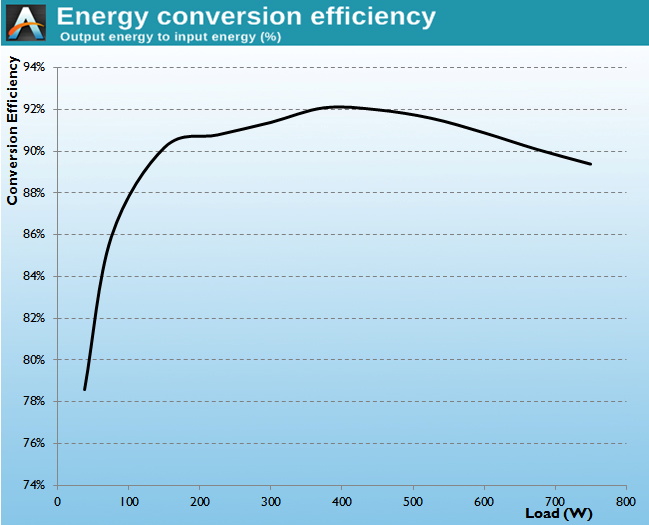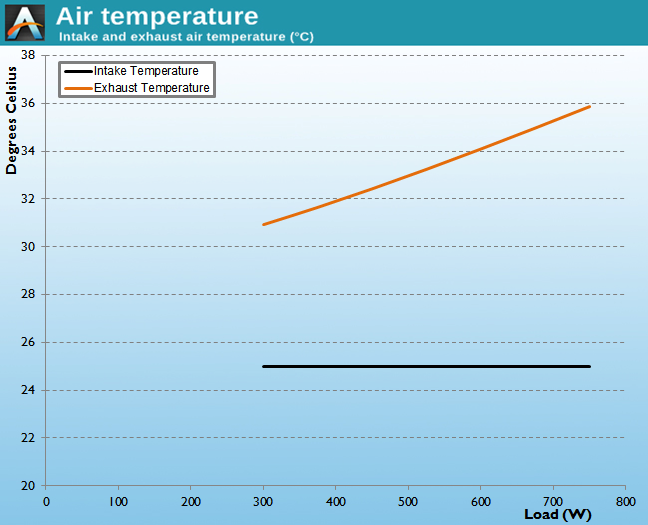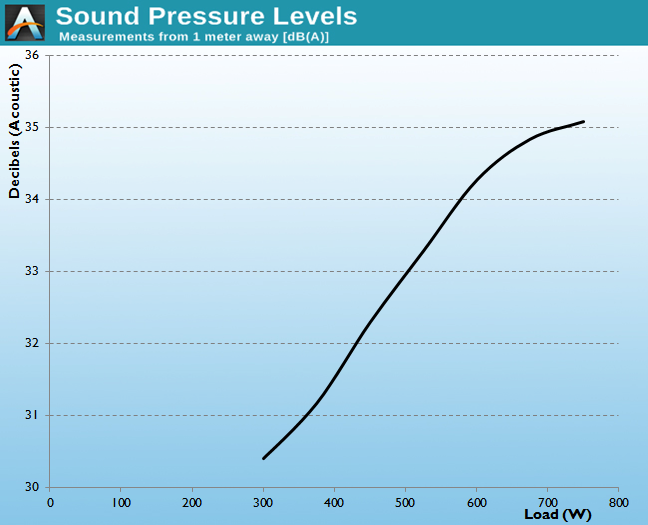The FSP Hydro G 750W Power Supply Review
by E. Fylladitakis on March 3, 2016 8:00 AM EST- Posted in
- PSUs
- Cases/Cooling/PSUs
- 750W
- FSP
- Modular
Cold Test Results
For our PSU testing we are using high precision electronic loads with a maximum power draw of 2700 Watts, a Rigol DS5042M 40 MHz oscilloscope, an Extech 380803 power analyzer, two high precision UNI-T UT-325 digital thermometers, an Extech HD600 SPL meter, a self-designed hotbox and various other bits and parts. For a thorough explanation of our testing methodology and more details on our equipment, please refer to our How We Test PSUs - 2014 Pipeline post.
The conversion efficiency of the FSP Hydro G 750W at room temperature is very good, with the PSU surpassing 92.1% at 50% load. It also has an average of 90.8% within the nominal load range (20% to 100% of the unit's capacity). The efficiency is relatively stable across the nominal load range and only degrades significantly when the PSU is very heavily loaded, but it always remains well within the 80Plus Gold certification limits.
FSP has designed the Hydro G to minimize the use of the active cooling in order to keep noise levels down, similar to zero fan speed idle features we've seen in other classes of PC components. As a result, PSU's fan will not spin at all when the load is very low, only finally spinning up when higher loads call for greater cooling. At room temperature, the fan of our sample started spinning when the load was exactly 300 Watts, albeit very slowly. The fan's speed did not increase significantly beyond that point either, with the Hydro G generating perceptible levels of noise only when fully loaded.















22 Comments
View All Comments
blahsaysblah - Thursday, March 3, 2016 - link
Not much seems to have changed with the actual PS design forever.PS + UPS in one(just a few minutes to shutdown safely and real surge protection and incoming voltage regulation).
PS combined with a CPU water cooler. They are usually in a key airflow spot in a lot of cases. Reduce noise and make it easier to keep cold air cold by combining two exhausts into one.
kaidenshi - Thursday, March 3, 2016 - link
"PS + UPS in one(just a few minutes to shutdown safely and real surge protection and incoming voltage regulation)."Indeed, I've never understood why we can't have a PSU/UPS combo in a full size PC, especially given the energy density of modern Lithium based rechargeable batteries. Maybe it's a safety issue? But then we've had Lithium batteries in laptops for about 20 years, that's a long time to perfect a design.
nathanddrews - Thursday, March 3, 2016 - link
I think you would both be interested in checking out some of the 5.25" battery backup units on the market. They are a bit niche and hard to find, but basically they are like what you are describing. The battery pack fits in a 5.25" drive bay and the PSU is connected through it.I think the main reason internal UPS aren't popular (outside the server market) is that desktop users have many other external devices connected that may also need to be powered down safely.
FuzionKore - Tuesday, March 8, 2016 - link
Exactly. Why invest in a PSU/UPS combo if your monitor dies anyways and you can't save what you were working on? The money is almost always better spent on a discrete UPS, unless somebody makes a unit with a power output for a monitor.5th element - Thursday, March 3, 2016 - link
Lithium ion batteries need to be kept cool otherwise their performance suffers quite badly. Inside a PSU is about the worst place you could put one.Wardrop - Friday, March 4, 2016 - link
How are you going to save your work and shutdown when your monitor is off? There's also often more to a PSU than just a battery. Adding all that to a PSU would make it quite expensive and extremely niche.Wardrop - Friday, March 4, 2016 - link
Replace the first "PSU" with "UPS".Murloc - Thursday, March 3, 2016 - link
a battery is pricey and useless to most people. What most people could use is a PSU able to survive a brown-out.But even then, it's probably more worth it to replace the PSU if something happens. I've had 1 PSU die on me in my whole life.
xenol - Monday, March 7, 2016 - link
If you're going to have a UPS anywhere, it should be at the mains. As another mentioned, what's the point if you can't see what you're doing?Also wouldn't want water anywhere near a PSU.
asmian - Thursday, March 3, 2016 - link
So it's called 'Hydro', but it's not water-cooled. Apart from generating click-bait product names, what on earth is their marketing team smoking?